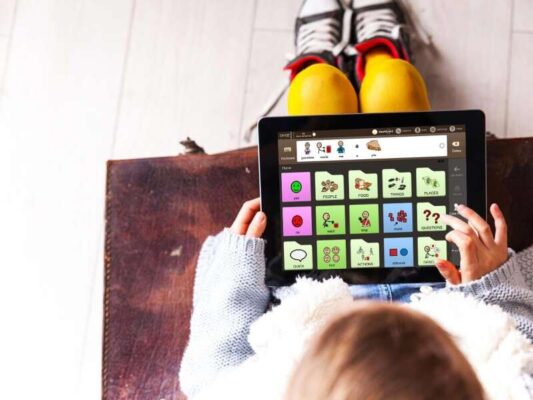
New applications for studying. What to expect in 2021?
Last updated on June 23rd, 2022 at 04:25 am
In 2020, the EdTech market was estimated at $85.8 billion. But with an annual growth rate of 16.1%, it is predicted to reach over $181 billion by 2025.
The developments of 2020 almost completely changed the nature of the educational market. The coronavirus and lockdown started new learning trends that are now shaping our present. And these trends will develop in 2021.
We will reflect on what to expect from 2021 in terms of EdTech, how to use the emerging trends, and how the app market will grow in the future. And if you are looking to develop applications for your business, pay attention to the Diversido studio.
2020 changed everything
Covid-19 changed everything, as a result of the closure of educational institutions all around the world, online services and platforms turned out to be the only possible way to continue studying. Thus, 2020 became a year of the explosive growth of EdTech projects.
As of early 2021, there are 20 EdTech companies globally with a capitalization of more than a billion dollars each. Three of them have already crossed the 10 billion mark.
Interest in EdTech projects leads not only to the growth in capitalization. It also leads to the increased attention to online education.
Personalization
The importance of big data in the educational process has increased many times. Companies analyze the use of interactive tutorials and platforms based on tens of thousands of users’ actions. Thus, it is possible to understand which tools and methods are effective and which are not. Statistical analysis helps to gradually improve online learning methodology.
This works for each specific user as well. Here is a number of personalization tools that can be considered the EdTech “gold standard”:
- Flexible educational process. The student can independently control the pace of learning and its intensity, based on their own goals and purposes. There are no tight deadlines or class schedules. The platform can only send notifications and reminders about classes, without sticking to a certain timeframe. Even if one needs a real teacher for training, class schedules can be arranged absolutely at any time convenient for the student, even at night.
- Personalized program. Standard programs “for all” are a thing of the past for EdTech. The proper program is formed with the help of data collected on the preferences, strengths, and weaknesses of each student and the peculiarities of their activity.
- Individual goals. The system takes into account not only the learning process but also the goals of students. Thus, the curriculum, sub-objectives, and tools will be different for each student.
Non-standard teaching methods
With the growth of the EdTech market, more non-standard teaching methods and tools pop up. AR and VR (augmented and virtual reality) are among them. They help illustrate tutorials. VR classrooms became a way out for many students during the lockdown. They really helped switch from full-time offline learning to home study format.
What’s more, even tools meant solely for entertainment can now be successfully used in education as well. The best example is Minecraft: Education Edition. It’s a popular computer game among millions of children. Minecraft makes it possible to build almost any training module: architecture, geography, English, biology, culture, physics, chemistry, etc. This particular method combines two important concepts at once. First, children study in a familiar and interesting environment, so there is no need to spend time and energy on keeping their attention. Secondly, the flexibility of the tool allows presenting almost any educational information in the form of a game — all depends on the teacher’s imagination.
Improved approach to the learning process
Most startups that entered the EdTech market in the past 10 years focused specifically on the technological component of education. The methodology of the educational process was developed along with using specific tools. It was 90% empirical, acquired from real experience. Even now that technology is far ahead, many learning services still use strategies that were popular 30 years ago. They don’t try to improve them.
Microlearning tools have become increasingly popular over the past few years. This is a kind of educational process where topics are cut into many short lessons lasting from 3 to 10 minutes. It is hard to imagine that this would have been relevant 20 years ago. However, the pace of life has certainly increased, and now, many people use every spare moment to learn more things and study. Taking a short lesson while waiting in a traffic jam is our today`s reality.
The process of developing a new teaching methodology is underway. But it is based not on individual tools. It is based on the possibilities of online education, taking into account existing technologies.
Conclusion
Educational apps should not only organize the learning process but also make it effective. Learning should inspire and involve students in the process as much as possible. Thus, the biggest and most important challenge for EdTech in 2021 is to develop the habit of learning among students. Simply put, it should transfer education from the category of “must” to “want”. The microlearning format contributes to this pretty well. The scenario where you can gain new knowledge over morning coffee is now realistic.
In the context of the coronavirus pandemic, EdTech has gained massive adoption. The trends that 2020 started will be relevant for the coming years. The entire field changes in the heat of the moment and only those companies that pay attention to these transformations and learn to use new trends to their benefit will succeed.
Read Dive is a leading technology blog focusing on different domains like Blockchain, AI, Chatbot, Fintech, Health Tech, Software Development and Testing. For guest blogging, please feel free to contact at readdive@gmail.com.
